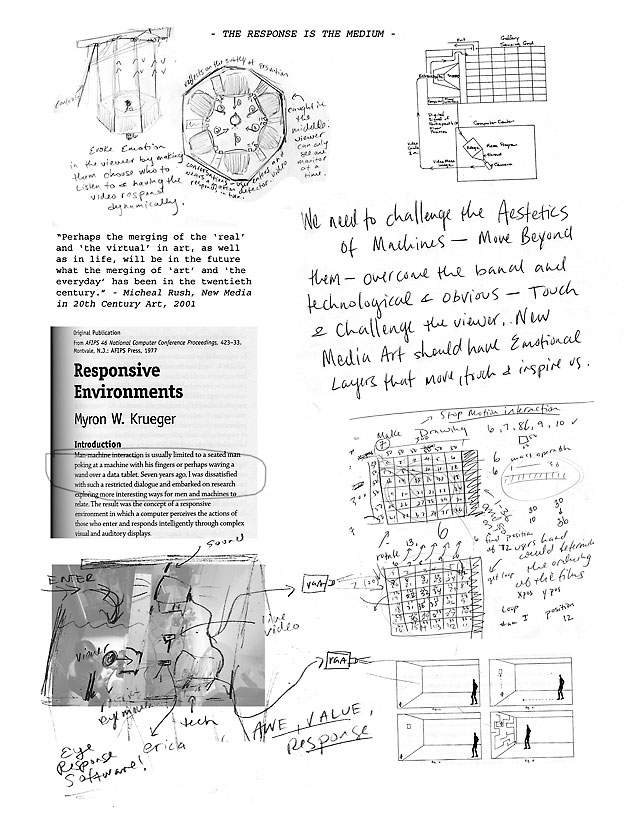
Interactive new media installations in the contemporary gallery have become an integral part of Modern Art. Rooted in Dada, Fluxus, conceptual art, and avant-garde cinema of the 60s and 70s, exhibitions have grown to include experimental video (Nam June Paik), projection art (Bill Viola, Bruce Nauman), virtual reality (Christine Davies), experimental music (Clouds of Sound, Golan Levin), robotic sculpture (Stelark), artificial intelligence installations (Ken Goldberg), and new human interface design (Christine Sommers). Digital technology introduces entirely new possibilities for the creation and experience of art. Artists must learn to respond to the corporate electronic age with human interfaces that extend beyond the banal and evoke emotion in the viewer by interacting and responding to their presence.
Dean Ayers states in the technology and culture section of the 2003 Annual Report, "A new digital Arts program plans to integrate existing digital arts programs and efforts in Music, Media Studies, Drama, and the Institute for Advanced Technology in the Humanities" (p.13). Where is Studio Art in this list? Should we not be an integral part of the digital humanities effort?
New media encourages collaboration due to the challenges of integrating cultural ideas, artistic practice, and complex technology. Artists, Designers, Engineers, Programmers, Musicians and Curators all work together in institutions such as the Whitney Art Museum, Ars Electronic, IEA, and the MIT Media Lab. The results of these meetings are exciting and innovative, and broaden the vision of all parties involved. In an effort to bridge connections between areas of knowledge around the University, I propose a semester long seminar that would bring these groups together into a cultural event.
This special interdisciplinary seminar would explore design issues related to the creation and display of computational art in the gallery, and introduce the software and hardware knowledge necessary to do so. Research, guest lectures, reading, and exercises would be used to introduce students to the concepts and history of the medium. The class would culminate in an exhibition in the Charlottesville community displaying video, interactive, and computational art. Students from Art History/Studio Art/Media Studies/Cognitive Science/ Computer Science / Music would be invited to submit a portfolio for admission to the class.
I have met with faculty members in diverse departments regarding the possibility of initiating such a course. This included meeting with Johanna Drucker (Media Studies Head), Dennis Profit (Cog. Sci Head), David Luebke (Comp. Graphics), Matthew Burtner (Electronic Music), and Matthew Affron (Art History). Through these meetings I have affirmed my belief that strong support exists at the University of Virginia for this elective. In addition, I have met with Scott McDonald, educational executive at Macintosh Inc. and he has expressed interest in loaning us equipment for the duration of a show.
Finally, through the use of Processing, a Graphics Language currently being developed at the MIT Media Lab, UCLA, the Interaction Design Institute Ivrea; the University could gain international exposure by participation in its open source community and website. This year, Processing was a key feature at the Ars Electronic festival. A portion of the class would be devoted to documentation and representation of the gallery event and the processes leading up to it.
Please consider giving your support and input as I refine this proposal. I am very excited about the possibility of participating as a collaborator in the planning, development and execution of a new media seminar. I believe that the students, the department, and the University could all benefit from such an endeavor.